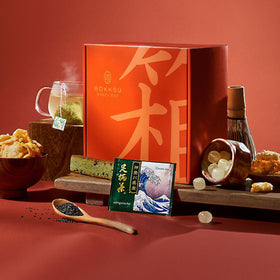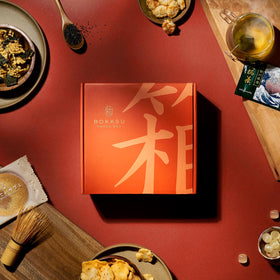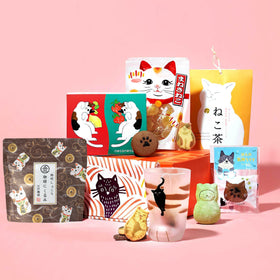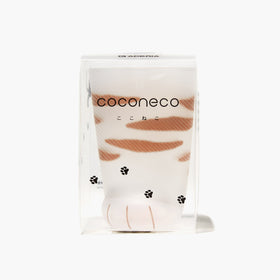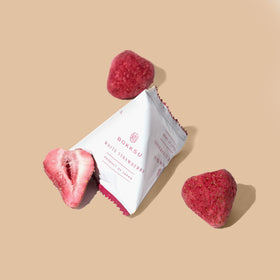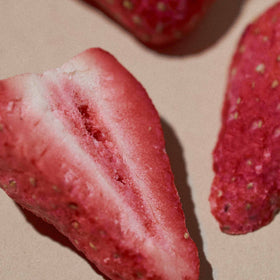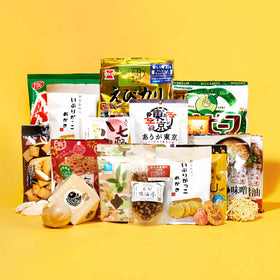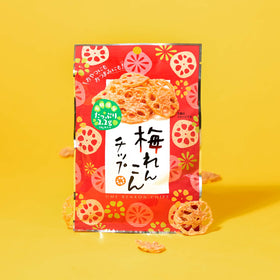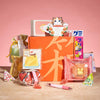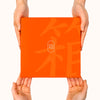The Gold Leaf Touch: Kanazawa’s Shimmering Gift Heritage
Kanazawa: Japan’s City of Gold

Kanazawa City, often called Japan's "city of gold," is a place where tradition and artistry shimmer as brightly as the treasures it produces. Its very name, Kanazawa, means "marsh of gold"—a fitting tribute to a city responsible for nearly all of Japan's gold leaf. With a history stretching back to the Edo period, Kanazawa grew into a flourishing center of culture and traditional crafts, where the delicate art of gilding was perfected and passed down through generations.
Among its many techniques, the entsuke method is a source of local pride. It has been used to adorn national treasures and cultural landmarks, including the revered Nishi-Honganji Temple in Kyoto. Recognizing its importance, Japan designated entsuke gold leaf as a Selected Conversation Technique in 2014, and in December 2020, UNESCO added it to its list of Intangible Cultural Heritage. Today, Kanazawa's golden legacy continues to shine, a glowing testament to the city's rich history and enduring dedication to beauty.
The Art and Tradition of Japanese Gold Leaf

The art of making gold leaf demands extraordinary patience and years of dedication. Japanese gold leaf artisans often train for a decade before mastering the craft. At the heart of Japan's gold leaf production is Kanazawa, where the traditional entsuke technique has been preserved for over 400 years. A gold leaf artisan begins with a coin-sized piece of pure gold, mixed with small amounts of silver and copper, which is then stretched, cut, and hammered into impossibly thin sheets. Through a painstaking process of layering, pounding, and transferring, the gold is gradually reduced to just 1/10,000th of a millimeter. These delicate sheets, known as kinpaku, are so fine they can flutter with the slightest breath, yet strong enough to adorn everything from Buddhist temples and statues to lacquerware, pottery, and even sweets or sake.
Among the two main types of gold leaf production, entsuke represents the pinnacle of craftsmanship. This method uses handmade Japanese washi paper, called hakuuchi-gami, to protect and stretch the leaf to its final, gossamer-thin form. Thanks to its exquisite luster and flexibility, entsuke gold leaf is essential for restoring Japan’s national treasures and cultural properties. Every stage of production is done entirely by hand, taking up to two weeks to create just 100 sheets. By contrast, tachikiri gold leaf, developed in the 1960s, uses modern techniques to enable mass production, making gold leaf more accessible for everyday items and workshops. It is this devotion to tradition that keeps Kanazawa’s golden glow alive, shining across temples, crafts, and daily life.
Gilded Homeware: Gold Leaf in Everyday Elegance

In Japan, gold is not only reserved for temples and art but also woven into the beauty of everyday life through homeware. Traditional craftsmanship shines particularly in Kanazawa lacquerware, where artisans apply layers of lacquer to wood or paper and decorate the surface using kaga maki-e, a technique of painting patterns and sprinkling them with gold or silver dust before the lacquer sets. The result is tableware that gleams with elegance, from gold-accented plates to tea sets. These items go beyond function, showcasing Kanazawa’s identity as Japan’s city of gold and reflecting the Japanese tradition of finding beauty and refinement in everyday objects.
Today, gold-accented wares are still a part of modern Japanese homes. A lacquered tea set might be brought out when hosting guests, adding a touch of formality to the tea ritual, while small plates with subtle golden motifs are used for serving seasonal sweets or side dishes, turning even simple meals into something special. For many Japanese families—and even foreigners—owning these pieces is a way to honor tradition and keep Kanazawa’s gold leaf artistry alive.
Edible Luxury: Kanazawa Gold Leaf in Food and Sweets

Gold has also made its way onto the dining table, especially in Kanazawa, which produces 99% of Japan's gold leaf. Here, artisans use delicate gold leaf sheets to transform ordinary treats into something extraordinary. Visitors often line up for the city's famous soft serve ice cream, wrapped entirely in edible gold that glimmers in the sunlight, creating a decadent, Instagram-worthy treat. Traditional wagashi are also sometimes topped with fine gold flakes, turning them into luxurious treats often sold as special souvenirs. Chocolates and even bottles of sake are decorated in the same way, with sparkling gold leaf or flakes that catch the light with every sip or bite. While gold leaf itself is pure, flavorless, and safe to eat, its delicate texture melts softly in the mouth, giving sweets and drinks an elegant finish and prove that in Japan, beauty and craftsmanship extend even to food.
Wearable Gold: Jewelry and Fashion Accessories

Kanazawa's mastery of gold extends beyond temples and tableware to jewelry and fashion. Local artisans produce gold accessories such as gilded hairpins, pendants, and brooches that reflect both elegance and tradition. Some contemporary brands, like Gold-Knot, push the craft further by combining Kanazawa gold leaf with European lace-making techniques and local silk threads, producing unique pieces that bring traditional craftsmanship into daily wear. Other jewelers incorporate mizuhiki—decorative cords once used to wrap gifts—into necklaces, earrings, and accessories, reimagining age-old customs in stylish, modern forms. Together, these creations show how Kanazawa continues to use gold not just as an artistic material but as a way of weaving tradition into fashion, making heritage wearable every day.
The Symbolism of Gold in Japanese Culture

In Japanese culture, gold carries symbolism that goes far beyond its beauty. It has long been associated with divinity and the power of the sun, representing heavenly energy, wealth, and nobility. These were qualities once displayed by rulers and feudal lords to affirm their status. In Buddhist art and architecture, gold conveys ideas of eternity and permanence, with temples and statues adorned in gold to reflect both spiritual radiance and worldly splendor. One of the most striking examples is Kyoto's Kinkaku-ji, the Golden Pavilion, whose gold leaf exterior glimmers as a symbol of harmony between the divine and the earthly.
Gold also holds meaning in more intimate practices, such as the tea ceremony, where golden accents on utensils bring a quiet elegance to the ritual. Even the Japanese art of kintsugi, the act of repairing broken pottery with lacquer mixed with gold, turns flaws into features, celebrating resilience and the beauty of imperfection. Together, these traditions show that in Japan, gold is valued not just for its luxury, but for the strength, resilience, and beauty it represents.
Kanazawa Crafts: Where to Find Authentic Gold Leaf Gifts

For travelers hoping to bring home authentic Kanazawa gold gifts, the city is full of artisan shops and workshops that keep tradition alive. A great place to start is the Imai Kinpaku Main Store, which sells gold leaf crafts and offers hands-on experiences. Visitors can join a Kanazawa gold leaf workshop, applying gold leaf to items like mirrors, tumblers, or even soft-serve ice cream in their popular Gold Leaf Ice Cream Experience, making it a fun and unique way to remember your trip.
Another spot worth visiting is Kanazawa Crafts Hirosaka, a gallery and shop located near the 21st Century Museum of Contemporary Art, where traditional craftsmanship meets modern design, resulting in stylish jewelry and decorative pieces. For those interested in Kanazawa’s long history with gold, Gold Leaf Sakuda in the Higashi Chaya-gai district is a must. Established in 1919, the shop originally sold gold leaf as a raw material but later expanded to lacquerware, cosmetics, edible gold, and even gold leaf facial masks. If you can’t fit everything into your suitcase, selected Kanazawa treasures are also available at Tokyo Station, making it easy to take home a golden memento of your journey.
Seasonal Sparkle: Autumn Gold Gift Inspiration

As autumn paints Japan in fiery shades of red and gold, gifts made with Kanazawa's gold leaf feels especially fitting. The warm shimmer of gold complements the season’s maple-red landscapes and cozy gatherings, making it a thoughtful choice for friends or hosts. For those who love to entertain, gold-leaf lacquerware trays or sake cups add a striking touch to holiday tables, pairing beautifully with seasonal teas or chestnut sweets. For a touch of indulgence, gold-infused cosmetics like luxurious creams or facial masks are perfect as cooler weather invites extra care and self-pampering. Home lovers will appreciate decorative pieces that bring a subtle glow to cozy interiors. Timeless and thoughtful, these gifts celebrate Kanazawa craftsmanship while capturing the warmth and beauty of autumn.
Gifting with Intention: Choosing Premium Pieces

When choosing gifts, the key is finding pieces that are both beautiful and practical. A pair of gold-leaf earrings or a pendant necklace makes for a timeless accessory that can be worn day to day. Tea cups or bowls are perfect for those who enjoy hosting, while home accents like coasters or chopstick rests add subtle elegance to any gathering. Even smaller keepsakes, such as a gold-leaf bookmark, make thoughtful gifts that are used and appreciated often. By selecting items that fit naturally into daily life, you ensure the gift is not only admired but enjoyed for years. In a world of fleeting trends, these timeless pieces stand out as both meaningful and enduring.
From Kanazawa to Your Home: Curated Gold Finds

For those looking to bring a touch of Kanazawa home, authentic gold leaf pieces make meaningful gifts that shine with both beauty and tradition. These are keepsakes to be treasured for years, passed down as stories rather than just objects. If you can’t visit Kanazawa in person, Bokksu Boutique’s premium gilded collection offers a wonderful way to experience authentic gold leaf pieces—and other Japanese home goods—right from home. From elegant ceramics to lacquerware trays and incense holders, you’ll find thoughtfully crafted items that capture the same spirit of artistry and luxury.
Author Bio




